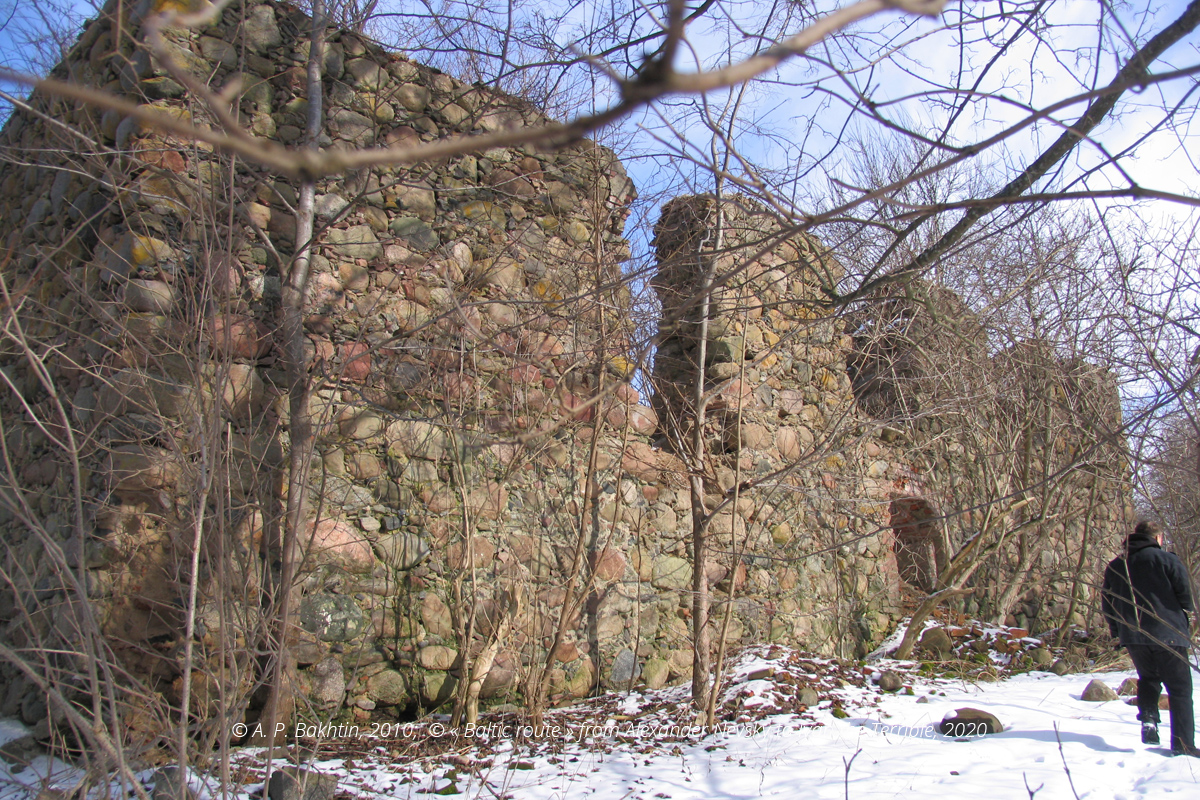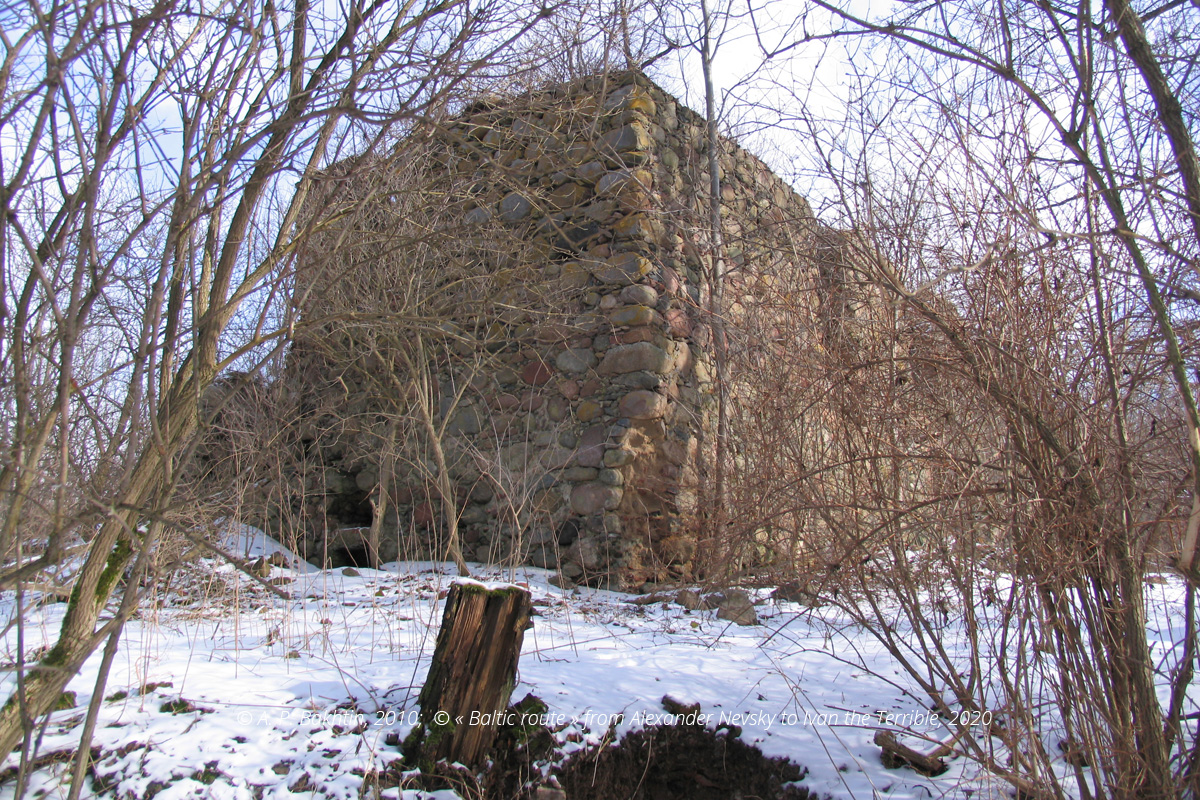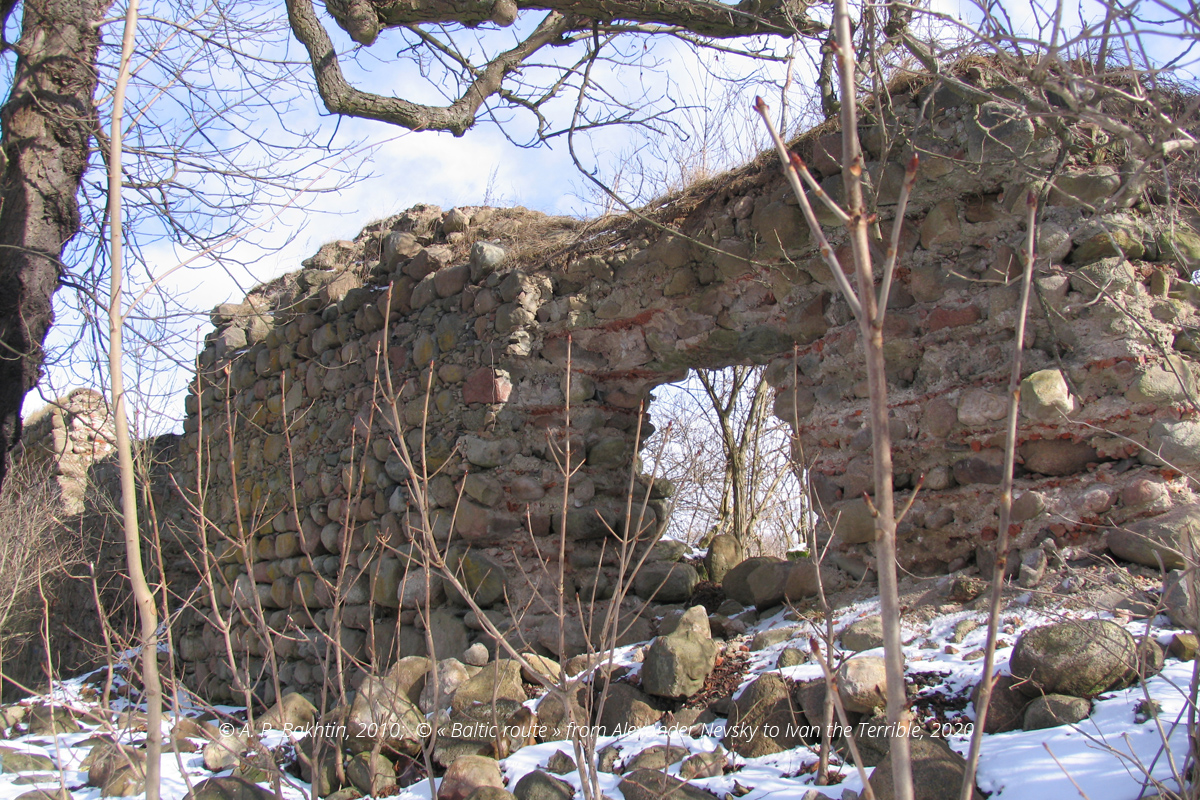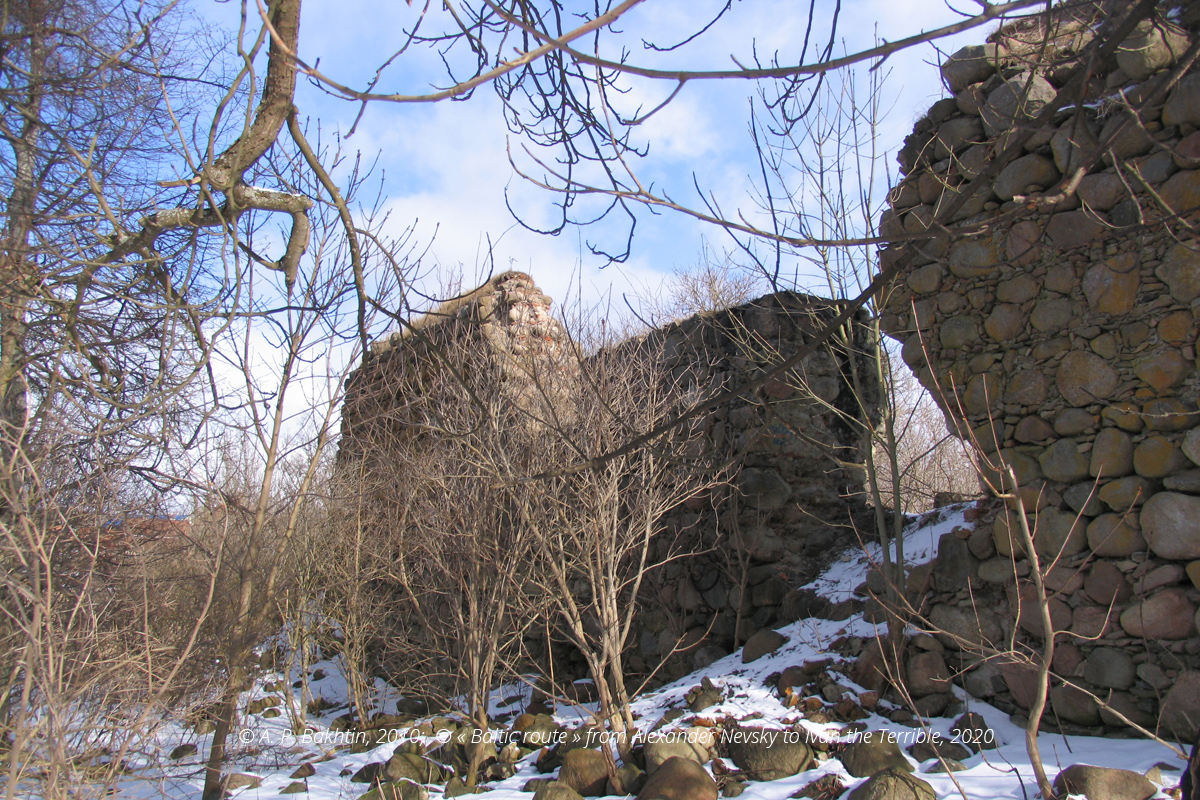Kaymen Castlein Zarečie

The construction of the Order’s castle probably dates back to the 14th century. The area was conquered during the march of Ottokar II in 1255. Most probably for a long time there was still a Prussian fortress of the local ruler, loyal to the Teutonic Order. During the Lithuanian Duke Keistut’s campaign to Prussia in 1308, the fortress was besieged and destroyed. It is most likely that after those events the castle was restored and strengthened by the Order. As early as the beginning of the 14th century, there was a mention of a church here. Due to the importance of the direction, the castle was rebuilt in stone. The works were carried out from about 1330 to 1352.
The legend about the underground passage connecting the castle and the church is preserved.
The castle belonged to the Königsberg borough and was the administrative centre of the chamberlain. Numerous campaigns of Lithuanians in the 14th century did not result in its capture. In 1424, the chamberlain of the office von der Trenk, a Prussian by birth, was mentioned. The Order preferred to have Prussians in the places where Prussian population predominated, as they knew the local customs and language. After the Thirteen Years’ War, Kaymenwas handed over by the Order for debt to one of its mercenary leaders. After the secularization of the Order, his descendant Andreas Rippe increased the pressure on the landowners, forcing free Prussians to perform statute labour in addition to the wealth tax.
As a result, Kaymen, along with Shaaken, became the centre of a peasant revolt in 1525. It was Kaspar, the miller, who led the revolt. On September 3, 1525, the mutinous peasants stormed into the castle, captured the half-dressed Andreas Rippe and led him away.
Duke Albrecht dismissed Rippe from his position at the end of the uprising.
The castle passed into the possession of the Duchy in the 17th century. Subsequently, in the 18th century it was the seat of the Chambers administration. By the 19th century, a room on the ground floor with two cross-shaped vaults had been the only thing that remained from the times of the Order. In the 20th century, Château Kaymen became a public domain, which was rented out to tenants.
After the Second World War the buildings in the castle survived and were used for household purposes.
Lack of timely repair led to their dilapidation and gradual deterioration. There was a pigsty in the ruins of the castle in 1985.




D. I. Veber
Tags: castles and fortresses, 13 century, Teutonic Order (Prussia), Путями немецких рыцарей: Пруссия в XIII веке, Teutonic knights

 English (United Kingdom)
English (United Kingdom)  Russian (Russia)
Russian (Russia) 


























